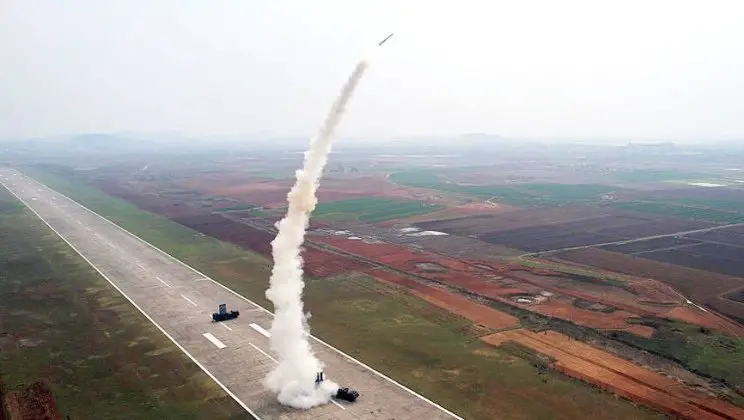<p >An unknown number of drones have penetrated North Korean airspace to drop propaganda leaflets over the capital city Pyongyang, with South Korea or the United States thought to have been responsible. The drones used a delta wing or swept wing design that reportedly mounted leaflets in their warhead sections. Sources have speculated that the American ScanEagle drone may have been used in the operation. North Korean officials described the operations as a “political and military provocation that could lead to armed conflict,” with the country’s foreign ministry on October 11 stating that the incursions demanded retaliatory action – referring to it as “irresponsible and dangerous provocation that may cause an armed conflict and lead to a war between the two sides.”&nbsp;</p><p ><img src=" title="Propaganda Drone Over North Korean Airspace"></p><p >North Korea’s airspace is among the most densely defended in the world, with its penetration by hostile drones highlighting the ongoing issues that several countries have had responding to threats from small unmanned aircraft. The penetration of similarly well defended airspace above Russian cities using drones in the Russian-Ukrainian War has led Russia to <a href=" development </a>of a new aerospace control system able to effectively monitor low speed and compact unmanned aircraft, which was announced in August 2023. Aside from the detection of drones, a further challenge remains their cost effective neutralisation since the aircraft often cost just a small fraction of the price of even smaller surface to air or air to air missiles. The use of directed energy weapons has emerged as one favoured solution. The latest drone incursions into North Korea are expected to potentially stimulate investments in similar capabilities, possibly in close coordination with Russia with which defence ties have strengthened considerably.</p><p ><img src=" title="Propaganda Leaflets Dropped on North Korea"></p><p >Western NGOs have a long history of playing a central role in information warfare efforts targeting North Korea, with such efforts escalating considerably under the Barak Obama administration. The U.S.-based North Korea Strategy Center, for one, had the stated aim of reshaping the country’s political culture to stimulate dissent, while the New York–based Human Rights Foundation had a specific “Disrupt North Korea”program for pursuing “initiatives that disrupt the North Korean regime” through information offensives. One such program involved sending 10,000 copies of the film The Interview into the country by balloon, after American defence and Democratic Party officials specifically shaped the film’s contents including through requests that it depict a gory execution of North Korean leader Kim Jong Un.&nbsp;Drones have also been used to<a href=" target="_blank"> carry pornographic content </a>into the country in the past. These information warfare operations are intended either to create a pro-Western fifth column in the country, or else to weaken popular resolve and thus make a potential military campaign against the country easier. Such information warfare efforts were key facilitators of Western victories in Iraq in particular, but also in Afghanistan, Libya and other targeted states.&nbsp;</p>
Drone Propaganda Ops. Target North Korean Capital Pyongyang: New Challenges For Air Defence Against UAVs

